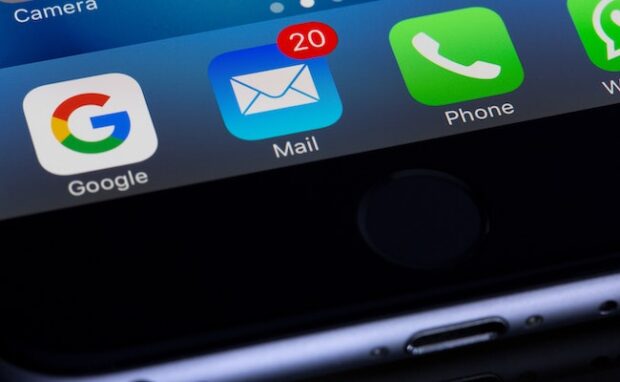Gmail Verification Scams And How To Avoid Them
Keeping yourself safe on the internet is important to secure your sensitive data. Platforms like Google have been protecting customers with two-factor authentication and other measures. Unfortunately, scammers are becoming craftier as they employ Gmail verification scams by impersonating the tech company’s messages.
If you’re not careful, you might believe you are receiving a legitimate Google verification message. As a result, you may inadvertently provide access to personal information and important documents. Some may plant ransomware by locking your computer until you send an exorbitant sum.
Fortunately, you can keep yourself safe with the simple steps in this article. I will also explain how to detect and respond to these scams. Later, I will discuss avoiding online schemes to ensure safe and convenient internet browsing.
How to protect yourself from Google verification scams
If you receive a Google verification email, do not click any link or button immediately. Instead, recall whether you have a valid reason to receive one, such as:
- A stranger may have changed your account information.
- Also, someone may have tried to access your Google Voice number.
- Google may have detected an unauthorized log-in.
- You signed into your account from an old device.
- You changed your password.
- Some reputable third-party apps, like browser extensions, may need you to log in to your Gmail account.
You may have received a Google verification scam if these criteria do not match your situation. However, you should double-check with the following instructions:
- Verify the sender’s address by checking for grammatical or spelling errors. People can’t use the official URL for verification messages, so they use email addresses that resemble it. For example, the URL may replace the o’s in google.com with zeroes.
- Also, ensure the URL has “https://” before it to confirm it links to a secure server.
- Read the email’s contents to identify grammatical or factual errors. Large corporations like Google do not send messages with such issues.
You may also like: How To Get Your Job LinkedIn Verified
If you suspect your message is a Google verification scam, do not click on anything in the email. Instead, click the More option and select the “Block [sender]” option. Also, prevent further email schemes by activating two-factor authentication with these steps:
- Open your Google account.
- Next, choose the Security option in the navigation panel.
- Click the 2-Step Verification and the Get Started buttons under the “Signing in to Google” section.
- Afterward, follow the on-screen steps.
You can use your password, phone number, Google Authenticator app, and passkey for 2FA. The Authenticator and passkeys are the most secure and convenient options.
How do Gmail verification scams work?
Scammers know people trust Google and other large tech firms. That is why they impersonate these organizations by sending seemingly-official emails.
They look legit to the untrained eye because they contain professional-looking graphics and logos. Unlike old email scams, they rarely contain grammatical or spelling errors.
Nowadays, ChatGPT and other AI programs generate text in any format. Moreover, people could run them through free grammar checkers to remove errors thoroughly.
What sets Google verification scams from official messages is they ask customers to provide personal information. For example, it may tell you your Gmail account got hacked, and you must click on a specific link to confirm your identity.
Then, the button will lead you to a spoof website asking for unnecessary information like your credit card details to “verify” your account. Like the fake verification email, it would seem legit to most people.
The website graphics closely emulate Google’s style, and its URL may include the company’s name. Unfortunately, it dupes you into providing sensitive data.
You may also like: How To Get A Gmail Verification Check
If you offer their number and security PIN, people could max out your credit cards. Also, a malicious individual could steal your identity if you provide your name, address, and other personal information.
Others may plant malware and viruses that could destroy your computer. Worse, someone could install ransomware that locks your PC until you wire a massive amount of money.
That can become a huge problem if your computer contains important school or work files. Also, fraudsters could collect information about other people you know and scam them.
Conclusion
Google verification scams mimic official verification messages to fool you into sharing personal information. Fortunately, it is simple to detect and avoid such schemes.
Use the steps above to ensure your internet safety. Also, you must secure your other online accounts and devices as cybersecurity becomes more important nowadays.
You can get more online security tips from Inquirer Tech. Moreover, it is a great source of tips and trends in artificial intelligence, gadgets, apps, and more.
Frequently asked questions about Gmail verification scams
Why is Google asking me to verify my identity?
Google protects its users by verifying their identities for specific situations. For example, you must verify your identity if you change your password or open your Gmail account on another device. Moreover, if someone is trying to hack your account, Google may ask for your identity. Still, you must only respond to official messages.
Can scammers enter my Gmail even without my password?
Your Gmail account is secure as long as you keep your password safe. Fortify your email security by adding two-factor authentication and avoiding potential Gmail verification scams. Also, only provide your information to reputable sources to ensure strangers have no other ways to endanger your privacy.
What if I suspect someone is hacking my Gmail?
Change your password and activate 2FA if you suspect your account got hacked. Then, verify your account settings and confirm unusual messages and behaviors. Also, contact Gmail’s support team immediately for further assistance. Inform your friends and colleagues about your hack to prevent the scammer from affecting your personal and work life.

